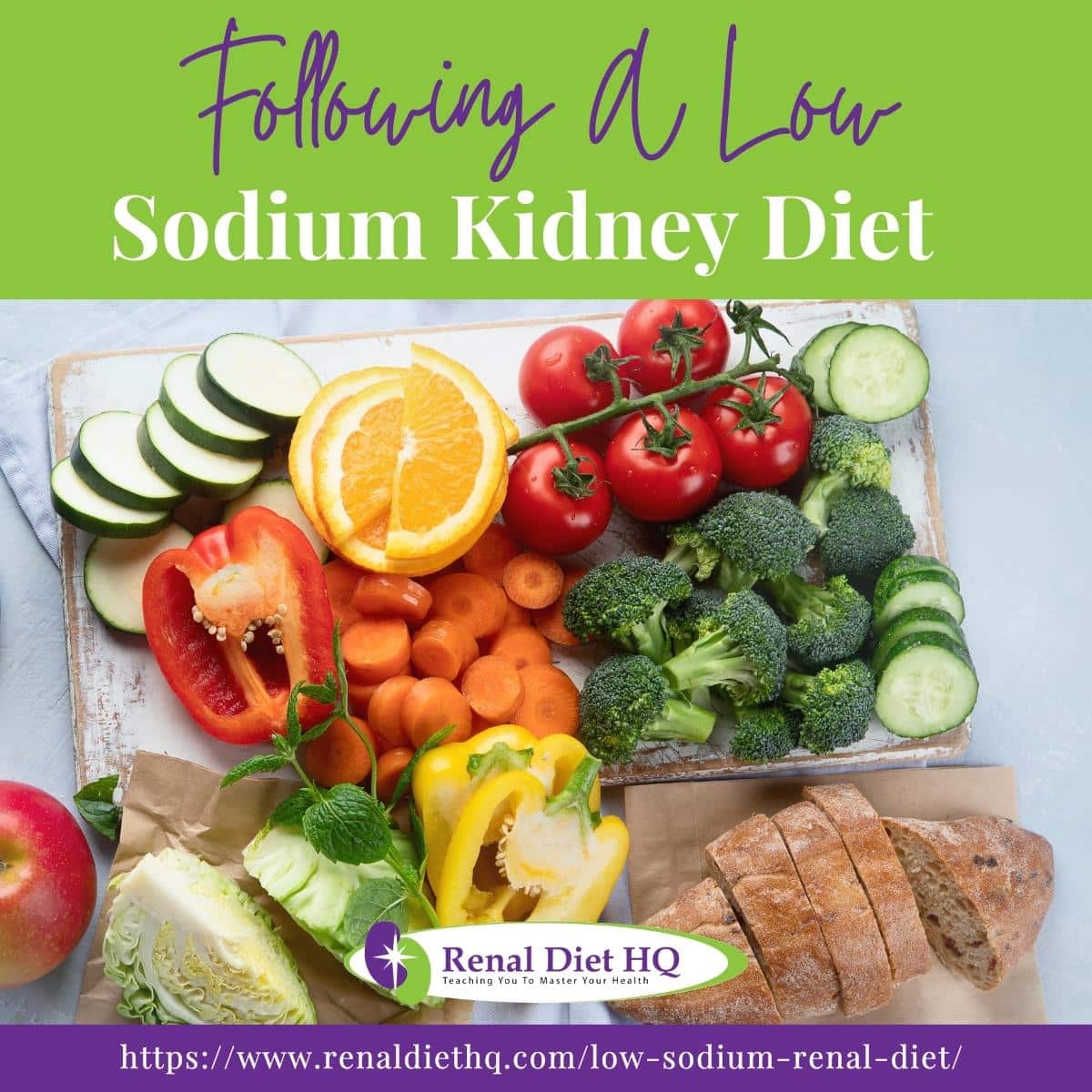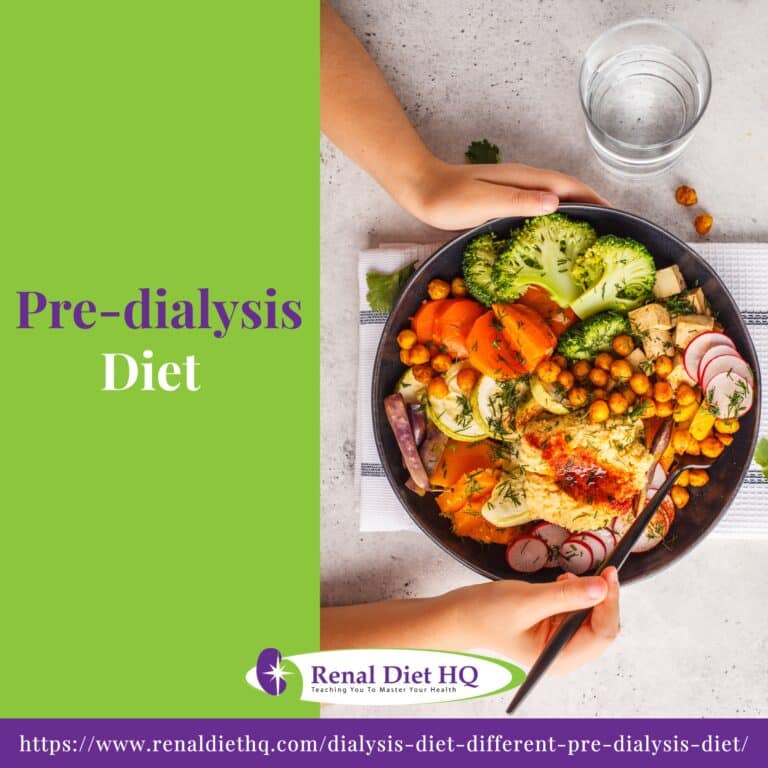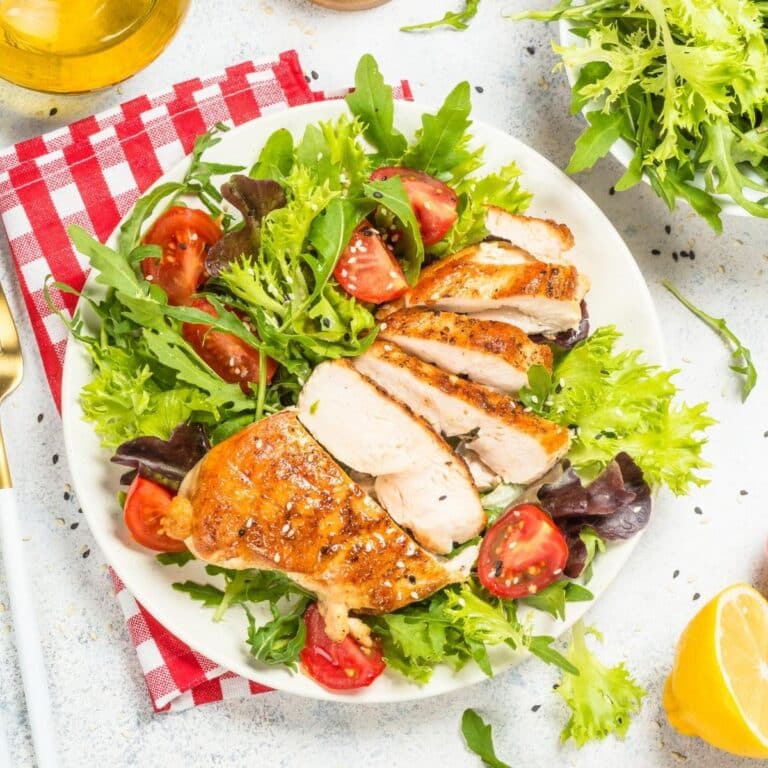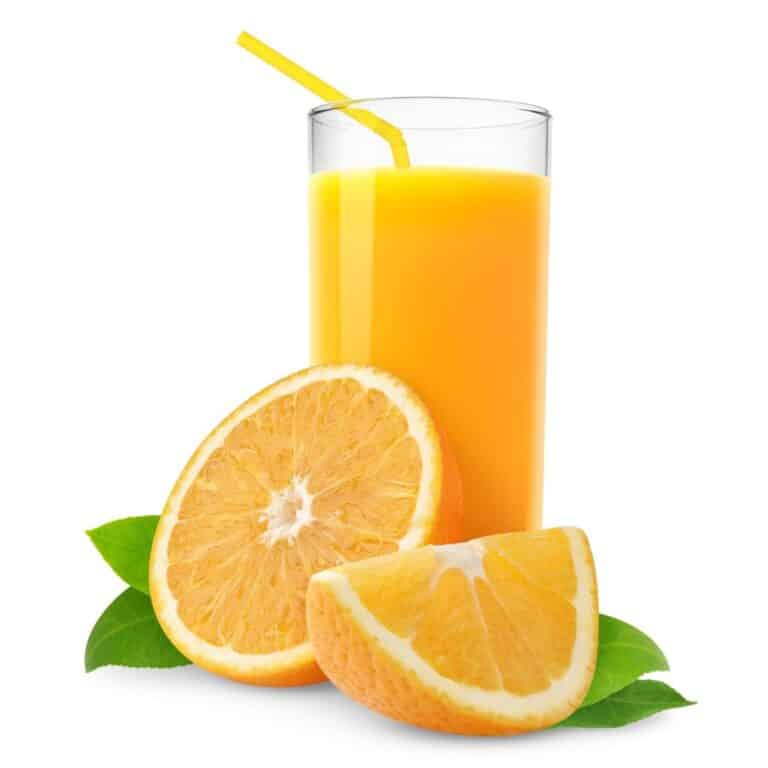Following a Low Sodium Kidney Diet
Are you living with chronic kidney disease (CKD) or on dialysis? If so, it is important to follow a low-sodium diet.
Sodium is one of the biggest ingredients to avoid. In your body, the kidneys are responsible for filtering out excess sodium and other waste. When the kidneys are not functioning properly, they are not able to properly filter out excess sodium.
A build up in sodium can lead to many serious health problems. Excessive sodium intake can lead to fluid retention, high blood pressure, and swelling, all of which can be very dangerous for those with CKD. Fluid retention can be a very serious matter (renal diet sodium limit).

If renal patients are not careful, fluid can build up so much that it floods into the lungs, making it hard to breathe. In this article, we'll explore the importance of following a renal diet and provide tips for grocery shopping and managing sodium intake (reduce sodium intake on a renal diet).
We will also provide delicious low-sodium recipes that are sure to please any palate!
So, let's get started on your journey to healthier eating!
Jump to:
Key Takeaways
- A low sodium renal diet is recommended for patients with renal disease to avoid serious health problems such as fluid retention, high blood pressure, and swelling.
- Fresh or frozen fruits and vegetables are preferred over canned options which may contain added sodium.
- Salt-free seasonings can add flavor without added salt, and cured meats such as bacon, hot dogs, and lunch meats should be avoided.
- Grocery shopping for a low sodium renal diet may require some adjustments but there are many healthy options available, and managing sodium intake is important for those with chronic kidney disease.
For More Recipes and Ideas --->> Get Your Free Meals and Recipes That Are Perfect for Pre-Dialysis Diets, Pre-Dialysis with Diabetes, or Dialysis Diets.
Health Implications
Making the right dietary choices can have a huge impact on your health, especially if you're living with CKD.
High sodium intake can lead to increased blood pressure, which is a major risk factor for kidney disease progression. Elevated blood pressure puts stress on the kidneys and can further damage their vessels.
Excessive sodium intake can cause fluid retention in the body, leading to swelling in the ankles, legs, and other parts of the body.
Following a low sodium kidney diet is essential to managing hypertension risks and fluid retention. The kidneys are responsible for filtering out excess sodium and waste from the body, so any extra sodium intake can lead to serious health complications. Therefore, it's important for individuals with CKD to pay attention to their daily sodium intake.

Restrictions and Guidelines
Restricting sodium intake is critical for those with CKD to maintain proper body function and avoid serious health complications. The recommended daily sodium intake for kidney patients is 1,500 mg/day, but the average American consumes 3,400 mg/day. Meal planning, grocery shopping, dining out and cooking tips can help reduce sodium intake while still enjoying delicious foods.
A low-sodium diet requires careful consideration when it comes to food choices. Fresh or frozen fruits and vegetables are preferred over canned options which may contain added sodium. Cured meats such as bacon, hot dogs, lunch meats should be avoided or limited if possible (low phosphorus meats).
When you are grocery shopping, try to avoid most boxed or processed packaged foods. A lot of them contain a lot of sodium and other preservatives that your kidneys may not be able to process properly. If you must purchase these products, aim for products that have less than 35 mg of sodium per serving, which means that they are very low in sodium.
Low-sodium juices and beverages are best as well as unsalted butter which can remove around 4% of the daily value (DV) of sodium per tablespoon used in recipes compared to salted butter. Sodium-free or very low sodium products are ideal when available. Salt-free seasonings like garlic, cumin, turmeric and sage can add flavor without adding salt to dishes at home or when dining out.
Food Options
A significant step towards a low sodium diet is to focus on whole, unprocessed foods. Fresh fruits and vegetables are naturally low in sodium and packed with essential nutrients. Apples, berries, cherries, pineapple, lemons, peaches, pears, tangerines, and watermelon are excellent fruit choices for a low sodium renal diet (kidney friendly fruits). For vegetables, try asparagus, broccoli, cucumbers, summer squash, and eggplants.
When it comes to protein, opt for fresh meats and fish over processed varieties. Many processed meats are high in sodium, used as a preservative and flavor enhancer. Fresh chicken, fish, and pork loin protein are lower in sodium and can be seasoned with a variety of herbs and spices for flavor.
Speaking of herbs and spices, they are your best friends on a low sodium diet. Swap out salt for flavorful alternatives like garlic, onion, pepper, rosemary, thyme, and other sodium-free seasonings. Mrs. Dash is a popular brand offering a wide range of salt-free seasoning blends that can add a flavor punch to your meals without the sodium.
Grains, pasta, and rice can also be part of a low sodium diet. Opt for whole grain varieties when possible, as they are more nutritious. As a general guideline, you should look for foods with 5% Daily Value (DV) or less of sodium. A DV of 20% or more is considered high. Be mindful of pre-packaged mixes, though, as they often contain added salt. , uh
Now, let's talk about condiments. Many store-bought sauces and dressings are high in sodium. However, you can make your own at home with a few simple ingredients. For example, a homemade salad dressing can be as simple as olive oil, vinegar, and your favorite herbs.
Lastly, don't forget about beverages. Some drinks, like certain sports drinks or sodas, can be high in sodium. Water is always the best choice, but if you're looking for something with a bit more flavor, try fresh juices like apple juice and grape juice, both of which are kidney friendly.
Remember, managing sodium intake doesn't mean you have to sacrifice flavor. With a little creativity and knowledge, you can enjoy a diverse, flavorful diet that supports your kidney health. Always consult with your healthcare provider or a dietitian for personalized advice (how much sodium per day for renal diet).
Canned Foods
The high sodium content in many canned goods can be a real issue, but don't worry, there are plenty of low-sodium options out there that are both tasty and kidney-friendly.
Firstly, let's talk about vegetables. Canned vegetables are a convenient and affordable way to get your daily dose of vitamins and minerals. However, many canned vegetables are loaded with sodium to increase their shelf life. The good news is that many brands offer sodium-free or reduced-sodium versions. These are a great choice for those following a low-sodium kidney diet. Just remember, moderation is key. Even low-sodium vegetables can be harmful to the kidneys if consumed in excess (Low Sodium Canned Foods For CKD).
Beans and lentils can be fantastic low-sodium canned food options. These nutrient-packed legumes are versatile and can be used in a variety of dishes. However, make sure to check with your doctor or kidney dietitian before incorporating kidney beans into your kidney diet, as they may be unsuitable for some kidney patients because of their potassium and phosphorus contents, especially patients on dialysis.
Reading labels is crucial when choosing low-sodium canned foods. This way, you'll know exactly how much sodium each product contains and can avoid exceeding your recommended dietary limits. It might seem like a lot of work, but with a little practice, it'll become second nature. Pick canned foods labeled "No salt added" or something similar—this can make a difference between a serving of beans being 22% vs 4% of your DV of sodium.
One good tip to follow when using canned vegetables is to rinse them before cooking. Rinsing canned vegetables can reduce salt content by 23%. This makes them a great option for those seeking to incorporate vegetables into their renal diets without compromising taste or health.
Canned fruits can also be a good choice. However, they can be high in sugar, so it's important to choose fruits canned in their own juice rather than syrup. And, as always, check the label to ensure you're making a kidney-friendly choice.
While canned foods can be a convenient and affordable option, it's important to remember that fresh is best. Fresh fruits and vegetables tend to have fewer additives and are often lower in sodium. Frozen produce can also be a good choice, as it's often free from preservatives and additional salt.

Meats and Fish
Now that you know how to manage the sodium content of canned foods, it's time to turn our attention to meats and fish. Protein sources are important for renal health, and when following a low-sodium kidney diet, making smart choices is key (low phosphorus meats).
Some meats, poultry, and seafood options have added sodium. The good news is that there are still plenty of delicious options available! If the package has a Nutrition Facts label, it’s important to look for products with a 5% DV of sodium or less per serving.
Choose fresh or frozen meats, poultry, and seafood, and instead of processed products. When selecting meats and fish for your meal plan, look for products that don't have added brine or salt solutions—skipping the brine can save over 10% of the recommended DV of sodium per serving.
When cooking these proteins at home, use low-sodium seasonings such as garlic powder or herbs like oregano or basil instead of traditional salt-based seasonings. Be mindful of portion sizes too; adults should aim for 4-6 ounces of meat, poultry or fish per day.
Meal planning can be a great way to ensure you stay on track with your low-sodium kidney diet while still enjoying delicious meals. Try including more plant-based proteins into your menu such as beans and legumes which provide fiber and minerals. With some creativity in the kitchen, you can create flavorful dishes while managing your dietary needs!
Baked Goods
Eating baked goods while following a low sodium renal diet doesn't have to be boring or difficult. With some simple substitutions and ingredients, you can enjoy the flavor of freshly-baked desserts and breads without worrying about excess sodium (kidney friendly desserts, low potassium desserts).
When baking at home, consider making low sodium substitutions in your recipes. Unsalted butter is an easy swap for regular butter that can reduce the daily value of sodium per tablespoon by 4%.
If a recipe calls for salt, try using flavorful herbs like garlic and cumin instead. You can also use fruit juices such as apple or orange juice to add sweetness without adding any extra salt. There are many delicious low sodium desserts available if you don't want to bake at home.
Bread is a surprising source of sodium in American diets. Up to 10% of the sodium we get from meals in the United States comes from bread.
Whole grain bread is recommended for kidney diets instead of white bread because of it’s high fiber content. Although whole grain bread may be slightly higher in phosphorus, most of it isn’t absorbed. Some of the best breads for kidney disease include Ezekiel Sprouted Whole Grain Bread, Brownberry Whole Grain Health Nut Bread, and Dave’s Killer Whole Grains & Seeds Bread.
With these tips, it's easy to find flavorful alternatives that won't cause any extra strain on your kidneys!
Condiments and Sauces
You can still enjoy flavorful meals while managing your kidney health with delicious condiments and sauces. Making creative substitutions, DIY options, and sodium-free swaps are all great ways to flavor boost meals without compromising your renal diet.
To begin with, there are many store-bought options that are either low or no sodium, such as mustard, horseradish, garlic, Mrs. Dash herb seasoning blend, lemon juice, jam or jelly, yellow Tabasco sauce, and even vinegar. For those who prefer a DIY approach, you can make your own condiments with fresh ingredients like garlic paste or roasted red peppers blended in a food processor.
When meal planning for the week ahead, it's important to have some of these low-sodium condiments on hand for quick and easy meal preparation. For those looking to add flavor without increasing their sodium intake, there are salt-free herbs and spices like cumin, turmeric, and sage. These work well in many dishes, such as a couscous salad or chili con carne (chili recipe for kidney disease).
With just a few simple changes, you can reduce your overall dietary intake of sodium while still enjoying tasty meals with friends and family at home or while eating out!
Recipes
Discovering delicious, nutritious meals that fit within your dietary restrictions can help you maintain a healthier lifestyle. Following a low sodium kidney diet may seem daunting at first, but with the right recipes and ingredients, it's possible to enjoy hearty meals while managing health.
Here are some tips on how to find great-tasting kidney-friendly recipes:
- Kidney-friendly desserts: Desserts don't have to be off-limits! Look for recipes using fruits like apples and strawberries as a sweetener, and try baking with unsweetened cocoa powder instead of sugar. Low-fat Greek yogurt is also an excellent option for those looking for something creamy and delicious that won't add too much sodium.
- Low-sodium snacks: Instead of reaching for chips or high-sodium pretzels, look into making your trail mix with nuts. Air-popped popcorn is also a great snack that doesn't require any added salt or butter – just sprinkle on some garlic powder if desired!
- Quick and easy meals: When time is tight, there are plenty of options for quick and healthy meals that will still leave you feeling full without adding extra sodium intake. Try making vegetable stir-fries with fresh vegetables in place of canned ones which often have more salt added; opt for lean proteins such as grilled chicken breast over lunch meats; and use herbs and spices to flavor dishes without having to reach for the salt shaker!
- Vegetarian options: Plant-based proteins such as beans, lentils, and tofu are naturally low in sodium and will satisfy both taste buds as well as nutrition needs! Also, explore international cuisine such as Indian curries which typically rely heavily on spices rather than salt when flavoring dishes.
With these tips in mind, exploring new flavors can be exciting while keeping health goals on track no matter what type of food preferences you have! Whether you prefer creating complex gourmet dishes or prefer simple one-pot dinners – there's something out there that will fit your needs while following a low sodium renal diet.
FAQs for Low Sodium Renal Diet
A low-sodium renal diet can provide several benefits for people with kidney disease. Here are some of the benefits:
1. Blood Pressure Control: A low sodium diet can help lower blood pressure, which is important for individuals with kidney disease. High blood pressure can further damage the kidneys, so reducing sodium intake can help manage blood pressure levels.
2. Fluid Balance: Sodium plays a role in fluid balance in the body. By reducing sodium intake, individuals can help manage fluid retention and prevent swelling or edema.
3. Kidney Function Preservation: A low sodium diet can help slow down the progression of kidney disease and preserve kidney function.
4. Heart Health: Swapping salt with salt substitutes can benefit heart health by reducing the risk of cardiovascular diseases such as heart attack and stroke.
When it comes to renal health, there are some foods that should be avoided on a low sodium diet. Cured meats such as bacon, hot dogs, lunch meats, and processed packaged foods should be limited or avoided due to their high sodium content.
Eating too much sodium can lead to serious health complications such as fluid retention, high blood pressure, and swelling. Instead of using salt or salty seasonings, try using salt-free alternatives like garlic, cumin, turmeric, and sage for flavoring (kidney friendly pork chop recipe).
Reading nutrition labels is an important part of managing kidney health. When checking the sodium content, look for serving sizes and be aware that sodium can come from many sources. It's important to note that foods labeled as 'sodium-free' or 'low-sodium' may still contain some sodium.
For a more accurate assessment of your intake, read nutrition labels and aim for less than 5% Daily Value (DV) of sodium per serving.
By being mindful of what you eat, you can accurately track your sodium intake and help maintain healthy kidney function.
When it comes to snacking, there are many healthy options available for those looking to make smarter food swaps. Meal planning can be beneficial in finding snacks that contain lower levels of sodium and more nutrient-rich foods.
Nuts, seeds, fruits, vegetables, and whole grains are all great options for snacks that are low in sodium and full of essential vitamins and minerals. Unsalted tortilla chips and unsalted popcorn are also good low sodium snacks. Consider substituting traditional ingredients with sodium substitutes like vinegar or herbs and spices to add flavor without the added salt.
There are also plenty of healthy recipes online that can help you find delicious snacks while keeping your sodium intake low (renal diet sodium limit).
It's important to monitor your sodium intake as part of a healthy lifestyle. The recommended daily sodium intake for healthy adults is 2,300 mg/day, but the average American consumes 3,400 mg/day.
However, if you have chronic kidney disease or are on dialysis, it's recommended that your daily sodium intake be less than 1,500 mg.
To limit your sodium intake you should look for low-sodium alternatives and substitutes such as salt-free seasonings like garlic, cumin, turmeric, and sage. Additionally, reduce canned foods with added salt, avoid packaged foods.
Lastly, be mindful of meats without brine and unsalted butter, which can help lower the amount of sodium consumed each day (how much sodium per day for renal diet).
Low-Sodium Food Is Essential For A Kidney Diet
You've learned a lot about following a low sodium kidney diet. Not only does it help to reduce fluid retention and high blood pressure, but it can also improve overall health for people with chronic kidney disease.
Eating the right foods and avoiding those that are high in sodium is essential. Be sure to read labels when grocery shopping, manage your intake by reading nutrition facts, and try out some delicious, low-sodium recipes.
By sticking with this diet, you can take control of your health and live a longer, healthier life.














